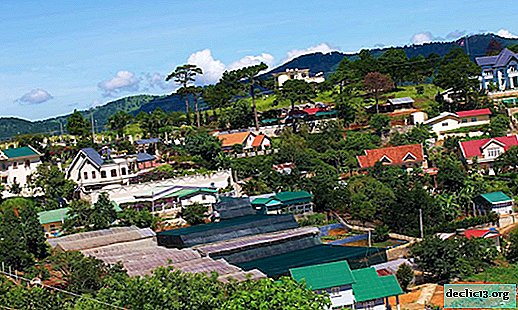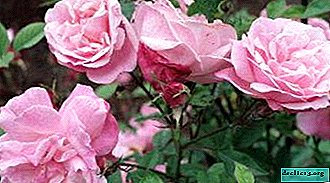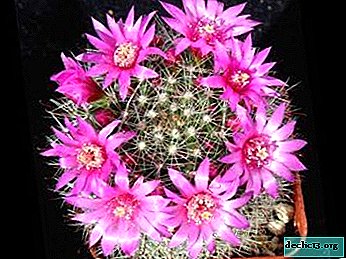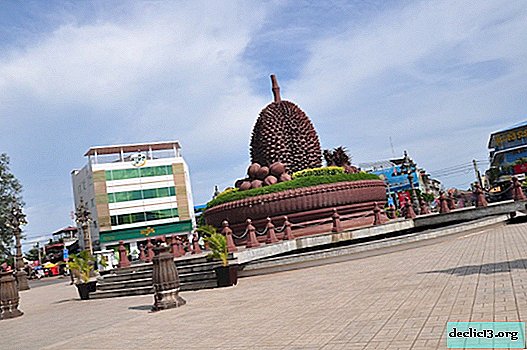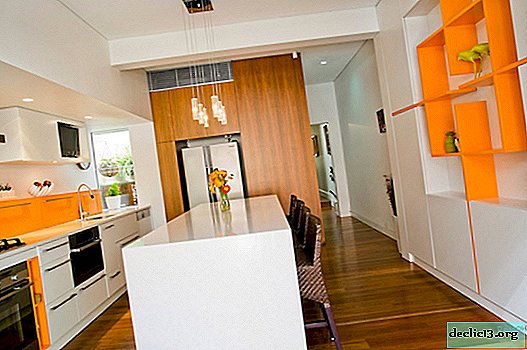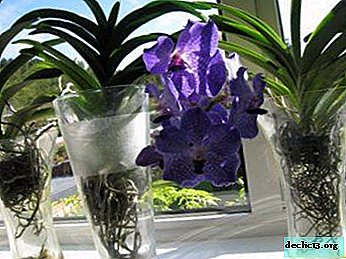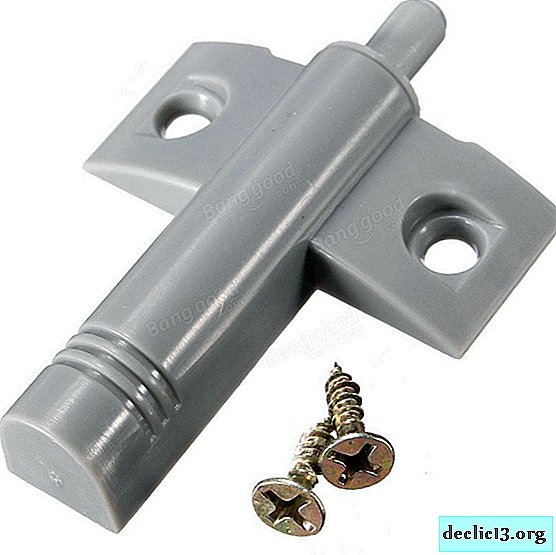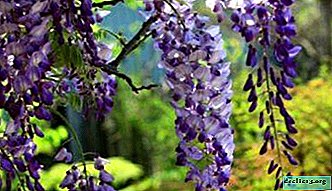A guest from warm places - Crassula Perforate: photo, an overview of varieties and cultivation at home

Tropical Crassula Perforate is very popular among fans of succulents. It grows rapidly into a neat, compact bush. Not afraid of the bright sun, looks great in hanging baskets and in company with other succulents.
The article tells about the varieties of this wonderful species, shows their photos, and also explains how to care for these plants at home and what difficulties they may encounter. Also, about the propagation and transplantation of Crassula and about possible pests and diseases of the plant.
What it is?
Botanical characteristics, homeland and prevalence
Crassula perforated, synonymous with the name Crassula Perforata Belongs to the genus Succulents of the huge family Crassulaceae.
According to various classifications, the genus includes 300 - 500 species.
Natural habitat:
- tropics of Africa;
- Madagascar;
- southern regions of Arabia.
The genus Crassula is a tropical evergreen plant that grows only in the southern hemisphere.
In everyday life, a flower is called a money tree, a tree of happiness.
In the literal translation of Crassul - "fat", which characterizes the fleshy, dense structure of the leaves.
Description of appearance
The variety of crassula perforated is classified as columnar varieties.
The trunk is straight, long, dense, does not branch, grows through the leaves. Stems in height grow more than 20 cm, densely leafy.
Leaves can be rhomboid and round, dense, thick. The leaves are green with a bluish tinge. From the bright sun, the leaves at the edges acquire a reddish hue. Leaves up to 3-4 cm wide, grow opposite, in tiers, at the base grow together.
Important! The flower can be grown as an ampel plant.Inflorescences - panicle umbellate, there are varieties with racemose inflorescences. Flowers are located at the top of the stems. The flowers themselves are miniature, numerous, white with a yellowish tinge, fragrant at the very beginning of flowering. Flowering most often occurs in winterlasts up to 1.5 - 2 months.
Photo
Here you can see a photo of the fat girl perforated:





Is it easy to grow and how long does it live?
The Crassula perforatum is an unpretentious flower that grows rapidly, grows well, gives a good annual growth.
A flower grown at home has significantly smaller sizes than natural specimens. But over time, grows into a dense, ornamental bush. Blooms in the apartment rarely, for flowering, additional stimulation is required - a certain temperature regime and limited watering.
Important! To maintain the shape of the bush, pinching of shoots is mandatory.Easily propagated, quickly rooted, allows the neighborhood with other indoor flowers. With proper care and updating of the bush can live more than 10 years.
What varieties exist in this species?
Variegata

Hybrid variegated grade of Crassula Perforate. The stems are erect, up to 30 - 50 cm in height. The leaves are diamond-shaped, glossy, up to 3 cm in length. The leaf color is green. Young leaves are decorated with yellow stripes at the edges and in the center of the leaf plate.
Often grown as an ampel plant, grows rapidly. The flowers are star-shaped, small, white, formed at the very top of the shoots.
Minor

Crassula minor - a deduced compact species, has the synonymous name compacta. It grows well even in a semi-shady place. The stems are straight, bush, grow slowly. The leaves are fleshy, shiny, green in color with a reddish edging. Leaves are 1.5 cm long and up to 1 cm wide. Umbrella inflorescences combine many white or pink miniature flowers.
Alba

The stalk is shortened. With the development of peduncles, stems are pulled up, grow up to 35 - 40 cm in height. The leaves are oblong, shiny, smooth, collected in a wide outlet. The sheet plate is medium in size, up to 5 - 6 cm in length. The color of the leaves is reddish or green with a white and red pattern. The variety has a feature - immediately after flowering, the rosette dries. Propagated easily, by side outlets.
Home Care
| Lighting | The plant consumes a lot of light - up to 4 - 5 hours a day. From direct sunlight it is better to obscure the windows, burns may appear, especially in young flowers. |
| Temperature | Subject to night and day temperature differences, the plant develops better. Poor heat tolerance.
|
| Location |
|
| Watering |
It is necessary to immediately drain the water from the pan, stagnation of water is unacceptable. |
| Air humidity |
Ventilate the room regularly; the plant needs dry, fresh air. |
| Top dressing | During dormancy, the soil should not be fertilized. Top dressing resumes at the end of March. It is better to use ready-made liquid mineral fertilizers for cacti and succulents, with a high content of potassium and phosphorus. Low concentration nitrogen fertilizers can be used for young seedlings, for active growth of stems and leaves. Fertilizers are applied through irrigation, once every 2 weeks. Florists recommend fertilizing the soil with a weak solution of soluble salt. You can use special pills and sticks. |
| The soil | The soil mixture should be light, not too nutritious (exclude peat), well-drained. The drainage layer is polystyrene, fine gravel, coarse sand, crumbs of red brick. Soil composition:
|
| Pruning | To form a compact bush, the tops of young stems should be regularly trimmed (nibbled). Pinch 2 to 3 small leaves. At the place of pinching, the stems begin to branch, which allows the formation of a thick bush. Shoots that are too elongated from a lack of light are also cut off. Apical cuttings can be rooted. |
Breeding
Seeds
- Seeds are sown in flat wide containers, in a mixture of sand and sheet soil (1: 2).
- Sowing is kept under the film, aired daily.
- Seedlings dive after 2 weeks.
- The grown seedlings are planted in small pots, with a diameter of 6 - 7 cm, for growth.
Cuttings and leaves
The most reliable and affordable way.
- The shoots are cut with a knife, the leaves are carefully broken off.
- Fragments are dried for 2 days in the shade, processed with crushed coal.
- You can root in a mixture of sand and sheet soil or in water, with the addition of activated carbon (1 tablet per glass of water). After the emergence of roots, seedlings are transferred to separate containers.
Care, as for adult plants.
Important: You can propagate a fat girl perforated at any time of the year, usually the procedure is carried out in the spring.We invite you to watch a video about the propagation of the fatty by cuttings:
Transfer
 Young flowers are transplanted every year. Adult bushes are planted less often, as the root grows, when the pot became small - 1 p. at 3 years old.
Young flowers are transplanted every year. Adult bushes are planted less often, as the root grows, when the pot became small - 1 p. at 3 years old.
It is better to deal with transplant in the spring. The transshipment method is used - an earthen lump is stored, the plant is transferred to a container, 2 cm larger than the previous one. The soil is being renewed.
When transplanted, infected and dry processes are cut outtoo long root processes are cut.
Slices are processed by crushed charcoal. Pots are used small and shallow, according to the size of the root.
Reference! If the flower has not grown too much, you can only update the topsoil.Possible difficulties
- The flower discards leaves from direct sunlight and an excess of accumulated moisture.
- Stagnant water in the soil, a sharp drop in temperature provokes the appearance of rot of the root and stems. Urgent pruning, quarantine and transplantation with complete soil replacement are required.
- Light plaque on the leaves (powdery mildew) - high humidity, musty air, cold content.
- Deformation of leaves, growths, changes in color and elasticity of leaves - an excess of fertilizers and moisture, lack of light.
- Mealybugs and scale insects are treated with alcohol, then cleaned by hand.
- Spider mite will be relieved by spraying with a phytoerm, actellic or actophyte.
Which plants look like a fat girl perforated?
- Aichryson tortuous (Aichryson tortuosum). Low shrub. The leaves are diamond-shaped, fleshy, green.
- Aichryson home (Aichryson x domesticum). A hybrid variety, forms a compact bush up to 25-30 cm high. The leaves are fleshy, small.
- Monanthes wall (Monanthes muralis). Dwarf bush, up to 10 cm in height. Succulent, blunt leaves are arranged alternately.
- Monanthes amydros. Evergreen succulents have rounded or pointed fleshy leaves. Inflorescences are racemose.
- Paraguayan graptopetalum (Graptopetalum paraguayense). The stalk is short, juicy. The fleshy leaves are pointed, covered with a bluish waxy coating.
Crassula perforatum is popular not only because of its original appearance, it is also a very useful flower. It secretes substances with antiviral and antibacterial properties, leaf juice is often used in folk medicine.

